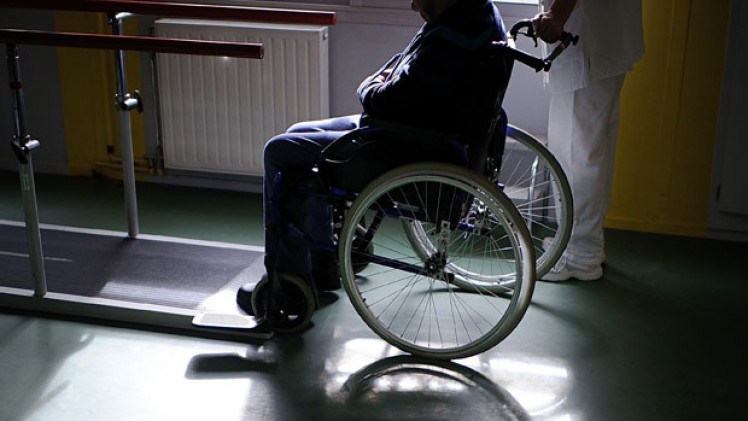-
Tips for becoming a good boxer - November 6, 2020
-
7 expert tips for making your hens night a memorable one - November 6, 2020
-
5 reasons to host your Christmas party on a cruise boat - November 6, 2020
-
What to do when you’re charged with a crime - November 6, 2020
-
Should you get one or multiple dogs? Here’s all you need to know - November 3, 2020
-
A Guide: How to Build Your Very Own Magic Mirror - February 14, 2019
-
Our Top Inspirational Baseball Stars - November 24, 2018
-
Five Tech Tools That Will Help You Turn Your Blog into a Business - November 24, 2018
-
How to Indulge on Vacation without Expanding Your Waist - November 9, 2018
-
5 Strategies for Businesses to Appeal to Today’s Increasingly Mobile-Crazed Customers - November 9, 2018
Non-surgical procedure may aid paralysis patients to temporarily move legs
A new non-invasive procedure that stimulates the spinal cord has been found successful in making five completely paralysed men move their legs in a rhythmic motion. Edgarton thought that completely paralyzed people probably wouldn’t get the neural connections necessary to get some movement back. This enabled them to move without resistance from gravity.
Advertisement
“These encouraging results provide continued evidence that spinal cord injury may no longer mean a life-long sentence of paralysis and support the need for more research”, said researcher Roderic Pettigrew. While his team does not yet know if these patients will be able to bear their own weight or walk again, the findings do reveal that voluntary control of the legs can be re-established. The men participating in this study have had their paralysis for a minimum of the past 2 years.
The latest study, however, focuses on a nonsurgical option. “The potential to offer a life-changing therapy to patients without requiring surgery would be a major advance; it could greatly expand the number of individuals who might benefit from spinal cord stimulation”. Also, the treatment is estimated to be one-tenth the cost of an implanted stimulator.
Subjects of the study were five paralyzed men, and they had been living with the condition for several years, ranging between two to six years. They attended 45 minute sessions once a week for approximately 18 weeks so that researchers can analyze how the non-invasive electrical stimulation affected their ability to move their legs. However, when the men attempted to move their legs further while receiving stimulation, their range of movement significantly increased. Their legs were moved for them in a steplike pattern. For four weeks, the men were also given twice daily doses of buspirone, a drug often used to treat anxiety disorders.
Almost 6 million Americans have some form of paralysis, including nearly 1.3 million with spinal cord injuries.
When the study began, the men’s legs only moved if the stimulation was strong enough to trigger involuntary movements. Researchers say that this environment can not be compared with walking, but demonstrated significant progress towards developing therapies for people with spinal cord injuries.
He explained that the connections must have been dormant, and were awakened by the currents. The researchers recorded the electrical signals generated by the calf and muscle directly below the calf while the men tried to flex their feet. “It’s as if we’ve reawakened some networks so that once the individuals learned how to use those networks, they become less dependent and even independent of the stimulation”, said V. Reggie Edgerton, senior author of the study and a UCLA professor of integrative biology and physiology, neurobiology and neurosurgery.
Advertisement
Paralyzed patients were able to voluntary move their legs after electrical stimulation to their spinal cords. Their team also plans to study people who have severe, but not complete, paralysis. Thus, they show that paralyzed individuals might regain at least some control over their limbs.





























